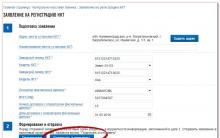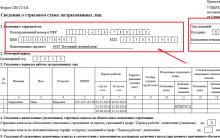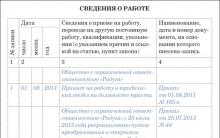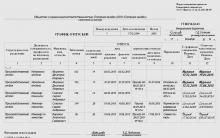For remuneration, each organization is required to form a payroll sheet. This is the main document of the accountant for accounting for the funds spent for these purposes.
Payments to workers should be made in such a way that they understand where the amounts to be paid come from, according to what rules deductions are made from wages and accruals to it.
The issuance of earnings must be carefully documented in accordance with the requirements of the legislation of the Russian Federation. Any audit commission should easily check the turnover of the organization's funds, the procedure for settlements with employees.
Basic moments
According to Art. 136 of the Labor Code of the Russian Federation, the employer is obliged to adhere to a certain procedure and deadlines for paying salaries, preparing and filling out the relevant papers.
Information and definitions
The procedure for issuing money must be documented. The enterprise generates special statements. Their forms are approved by law.
They are of three types:
- settlement;
- payment;
- settlement and payment.
The use of one form or another depends on some nuances.
Authorized employees who issue salaries should first examine in detail the following issues:
- definitions;
- the purpose of the document;
- existing regulations.
It is unacceptable to violate existing regulations. This can lead to problems with the labor inspectorate.
For an easier study of the legislative framework regarding the completion of RKO and other documents, you need to know the relevant terminology.
The main concepts include the following:
| Wage | This is the amount that the employer must give to employees for the performance of their work duties. Its size is regulated by the labor agreement and legislation. It cannot be lower than the minimum wage. Now in Russia it is 7500 rubles, and from July 1, 2019 it will increase by another 300 rubles. |
| Withdrawal slip | This is a document that is filled out when issuing salaries through the cashier. Issued for each employee separately. |
| Payroll T-53 | Reflects the salary actually received by the staff. It is issued for a group of employees (workshop, division, etc.) or the enterprise as a whole. |
| Payroll T-51 | Reflects the calculation of earnings for all employees of the organization. |
| Payroll T-49 | It is used to issue salaries, and also contains information about how it was calculated: salary, number of working days, accruals, deductions. This document combines forms T-51 and T-53. |
The procedure for compiling papers for the calculation and payment of wages is reflected in the Decree of the State Statistics Committee No. 1 dated 05.01.04. From this regulatory document, you can download a statement form for free. Discrepancies with the forms approved in the Decree are not allowed.

Existing Forms
The payroll sheet reflects all accruals to employees. This accounting document may consist of one part or several if the employees are divided into structural divisions of the company.
The statement reflects the exact calculations for each worker. Data from it is used in the preparation of financial statements.
The payment and settlement form (T-49) includes 23 columns. They contain the necessary information for deriving the result. It consists of two sections. Basically, the name of the organization (subdivision), the total amount of the document, the signatures of the chief accountant and director are indicated.
The tabular part contains columns:
- number in order;
- personnel number of the employee;
- position;
- rate (salary);
- hours worked;
- charges and deductions;
- amount payable or overpayment;
- surname, painting in receipt.
Sheets T-49 and T-53 are signed by the accountant and the head, and only the performer signs the T-51 form. To account for wages in small enterprises, a statement of form B-8 is used. The document indicates accruals, deductions, the amount to be issued. It also provides columns reflecting the receipt of money.

Purpose of the form
Pay slips are required for the following purposes:
- systematization of information on salary payments;
- confirmation of the intended use of money;
- simplification of the audit by tax authorities;
- conducting labor inspections.
The Labor Code of the Russian Federation obliges the employer to accrue and pay wages to staff so that people understand how the amount to be paid was formed. The payroll clearly shows all the accrued and withheld amounts.
In addition to the calculation, the very fact of receiving a salary in the form of an employee's signature should be recorded. This function is assigned to the payroll. With its help, the fact of receiving earnings by each individual worker is reflected.
The payroll combines both of the above functions: accrual and receipt of funds.
Now the payroll is used very rarely. This is due to the fact that the salary is mainly transferred to plastic cards by bank transfer. Payments to individual employees, for example, those who have not issued a card, are made using the CSC.
Another reason for refusing to use the T-53 form is that by signing opposite his last name, the employee sees the amounts of other employees reflected in the document. This violates the confidentiality of payroll data and often leads to conflicts.

Document execution
The payroll is completed in three steps:
| Title part design | The name of the organization, the serial number of the document according to the journal, the date of completion, the total amount of funds to be issued, the reporting period are indicated. Separate lines are reserved for the signatures of officials. This part is common to all types of statements. It contains mandatory information that indicates regardless of the method of calculation and issuance of earnings. |
| Table section layout | A table is provided to break down the total amount into detailed accruals and deductions for each employee. The content of the columns and their number depends on the form of the document, the method of payment, the number of staff. In the payroll, it is necessary to additionally reflect the method of calculating the amount to be issued. The table is expanded to reflect in as much detail as possible what the labor income that the employee will receive in his hands has been made up of. In the payroll, the table is adjusted to reflect the fact that the salary was received and the accompanying information. Columns for signatures and notes are intended for this purpose. In the latter, an identity document is indicated, which is presented upon receipt of money or a power of attorney, if the earnings are issued to the employee's trustee. If the salary is issued to the staff according to the payroll, then in addition, each employee needs to prepare a pay slip. In it, a person can see:
The settlement and payment version of the statement combines the two described above, that is, it reflects the calculation procedure and the fact of payment. |
| Filling in empty fields after issuing money |
|
Requirements for completing the payroll
The payroll can be drawn up by hand or in electronic form, for example, in the 1C ZUP salary program.
The document must contain the following details:
- signatures of officials;
- total amount;
- pay period;
- number and date of the document;
- name of the organization (IP).
When filling out the form, the accountant takes summary data from the time sheet and personnel orders. The statements consist of at least two sheets: a title sheet (contains details) and a tabular sheet (includes data for calculating payments). You can add pages to the document as needed.
The salary must be issued within five working days, starting from the day it is received from the account (clause 6.5 of the Central Bank Instructions dated March 11, 2014 No. 3210-U). The statement is compiled if more than three people work in the organization, otherwise they fill out an expense order.
The head of the organization and the chief accountant are responsible for the correctness of accruals and deductions. If the statement does not contain their signatures, then they cannot be accepted for execution.
The cashier is responsible for receiving, accounting, issuing, safekeeping and storage of money. A form of filling out the statement can be found on the Internet.
Responsibility for maintaining
Drawing up a statement is one of the duties of an accountant-calculator. He is responsible for the accuracy of the data in the document and the correctness of its execution. The contractor must sign the statement on the eve of the issuance of money on it and before approval by its head.
After making all payments and summing up the results of the statement, the accountant re-signs the already fully completed and paid document. Next, the form is filed and put away for storage.
Statements are papers of strict accountability and are subject to verification. They must be properly registered and stored. To this end, the organization annually develops and approves an accounting policy. It should provide for the development and maintenance of a register of statements of form T-53a. It opens for a year.
The journal registers all statements generated and paid during the year. Their numbers and dates of registration are indicated. Then the settlement documents are filed and deposited. Keep them for five years.
Correction, storage and closure
Ideally, nothing needs to be changed in the payroll. Strikethroughs look ugly and entail some difficulties. However, typos, albeit unintentional, do occur.
When they appear, do the following:
- with one straight line, carefully cross out the wrong number;
- above or next to write the correct value;
- all persons who signed the document before the correction must sign again;
- indicate the date of the revision.
The salary payment statement must be closed by the deadline indicated on the title page.
If not all employees received the money by the due date, the accountant must do the following:
- near the name of the employee who did not receive a salary, write the word "Deposited";
- after the tabular part, the total issued and deposited amounts are reflected;
- the statement is certified by the responsible persons with their signatures;
- a cash settlement is issued for the issued amount, its number is entered in the corresponding cell of the statement;
- the document is stored.
It is necessary to draw up and close the statement carefully, since it is often subject to checks.
Each type of accounting papers has its own shelf life. The statement is stored for 5 years, provided that during this period there will be a reporting audit. Otherwise, the storage period is extended to 75 years.
So, the payment of salaries should be strictly regulated and clearly reflected in the relevant documents of each organization. For this, statements approved by the State Statistics Committee are provided. Their design simplifies and unifies the accrual and issuance of funds to employees.











How to issue a power of attorney to represent the interests of an LLC to an individual?
How to apply for an IP: step by step instructions
Form of power of attorney to receive goods or material assets
The deadline for registering an individual entrepreneur in the tax
Business plan for a law firm: an example with calculations legal support for a business